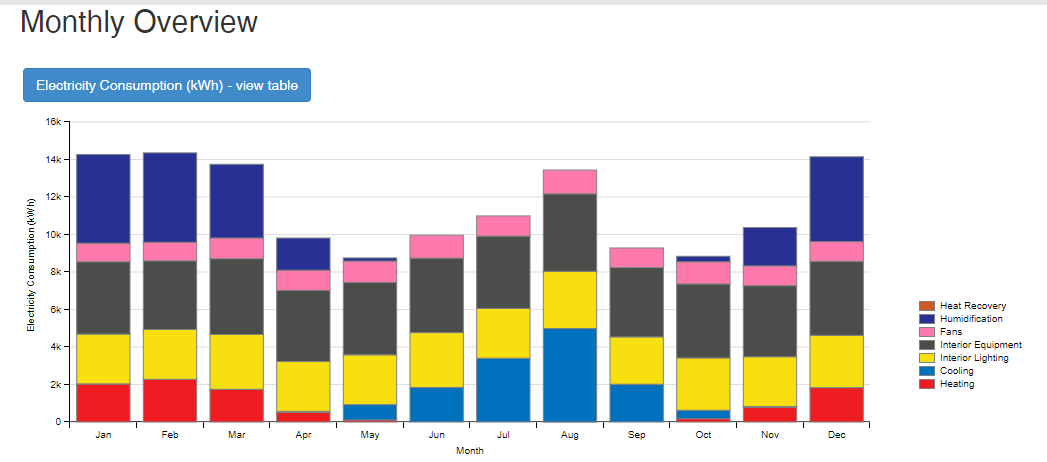 Shown as figure above, the sum of lighting and equipment energy consumption is much higher than the total of heating and cooling energy consumption. It is weird, generally the latter must cover the former.
Shown as figure above, the sum of lighting and equipment energy consumption is much higher than the total of heating and cooling energy consumption. It is weird, generally the latter must cover the former.
Is there any possible reasons?
 | 1 | initial version |
 Shown as figure above, the sum of lighting and equipment energy consumption is much higher than the total of heating and cooling energy consumption. It is weird, generally the latter must cover the former.
Shown as figure above, the sum of lighting and equipment energy consumption is much higher than the total of heating and cooling energy consumption. It is weird, generally the latter must cover the former.
Is there any possible reasons?
 | 2 | retagged |
 Shown as figure above, the sum of lighting and equipment energy consumption is much higher than the total of heating and cooling energy consumption. It is weird, generally the latter must cover the former.
Shown as figure above, the sum of lighting and equipment energy consumption is much higher than the total of heating and cooling energy consumption. It is weird, generally the latter must cover the former.
Is there any possible reasons?
 | 3 | None |
 Shown as figure above, the sum of lighting and equipment energy consumption is much higher than the total of heating and cooling energy consumption. It is weird, generally the latter must cover the former.
Shown as figure above, the sum of lighting and equipment energy consumption is much higher than the total of heating and cooling energy consumption. It is weird, generally the latter must cover the former.
Is there any possible reasons?
PS
The location is Tokyo in Japan, the unmet hours are inconspicuous, the cooling and heating COP of VRF system are 4.24 and 3.12 respectively.

 | 4 | None |
 Shown as figure above, the sum of lighting and equipment energy consumption is much higher than the total of heating and cooling energy consumption. It is weird, generally the latter must cover the former.
Shown as figure above, the sum of lighting and equipment energy consumption is much higher than the total of heating and cooling energy consumption. It is weird, generally the latter must cover the former.
Is there any possible reasons?
PS
The location is Tokyo in Japan, the unmet hours are inconspicuous, the cooling and heating COP of VRF system are 4.24 and 3.12 respectively.
The model can be downloaded from the link below:
https://wetransfer.com/downloads/d8297559cd741b798cf14d2601d97d6820220127025446/e716c7f7a85313047674203f891f007a20220127025532/33abae

